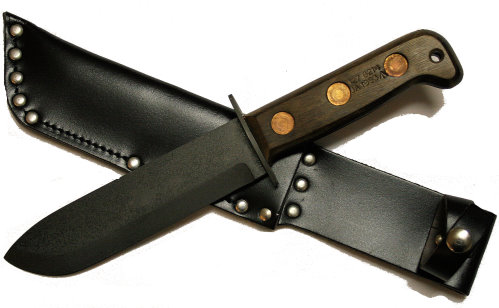As is the custom on Friday, today’s blog will be a little more diverse and light-hearted than usual. Regular readers will be familiar with my tendency to conduct “thought experiments”, often inspired by books or television that I am viewing. (Well, I like to think they are “thought experiments”. My girlfriend just considers them another of my eccentricities.)
The following occurred to me while watching an episode of “Supernatural” but it applies to many other examples of the action or horror genre. The scenario is the protagonists end up having to explore somewhere at short notice. Would it not be useful if they had beforehand assembled a small kit that contained useful items they might need? In effect, a modern day “possibles bag”? We will assume that this kit is intended to fit is a small bag such as a messenger bag, but it could just as readily be distributed in an equipment vest or in a daysac. It would be the sort of thing you can quickly grab from the car before you go to rescue this week’s female guest star. What might the contents be?
- Flashlight. Nearly everywhere in these movies seems to be dark and often underground so a flashlight would certainly be useful. Larger, more robust models can be used as clubs. Your flashlight will flicker and lose power when danger is near.
- Pistol. Danger is usually implied so better to have one and not use it that be without one and need it. A compact high-capacity .45 with several loaded spare magazines would be desirable. If we are in an episode of Supernatural silver or other specialist ammunition will be needed!
- Knife. A good, robust fixed-blade knife. My choice would be a kukri for its versatility and considerable chopping ability. A MOD survival knife is also a good choice. The shorter bladed varieties of machete or the British Army Golok are other possibilities, although might be a bit long to fit in some of the suggested bags.
- Prybar. A small crowbar has various uses and can perform many of the jobs that a knife is not recommended for. As well opening doors and breaking locks it can also be used as a digging implement, a piton or a weapon. Cold iron is of course potent against certain supernatural creatures and a good lump of it works well on most natural creatures!
- Cordage. People always seem to be falling into holes or quicksand so a rope to throw to them will be handy. A hank of paracord bundled hojo-jitsu style. A hank of string or braided fishing is useful for more mundane uses, as communication cord or setting a tripwire to topple a sentry. A roll of duct tape serves to silence and bind captives. A handful of cable ties have a number of potential uses too.
- Shell dressings, plasters. If there are guns about it is only prudent to pack a few battle dressings. A handful of smaller plasters for the inevitable cuts and scrapes. Major characters always seem to get these on their foreheads!
- Fire. One or two disposable butane lighters to light fuses and torches. Of course, in action movies Zippo lighters are disposable! Characters light them and throw them away, particularly if there is a big volume of gasoline.
- Compass. Having a spare compass is never a bad thing and they are rather useful for orientating your treasure map.
- Water bottle. Heroes are often immune to many physical needs, sometimes setting off on arduous journeys with neither a packhorse nor pack. A small bottle of water is useful, however. You can use it to wash wounds or pour it on the floor to find the hidden trapdoor!
If you have enjoyed this article or it has been helpful to you please feel free to show your appreciation. Thank you.
The Books



























